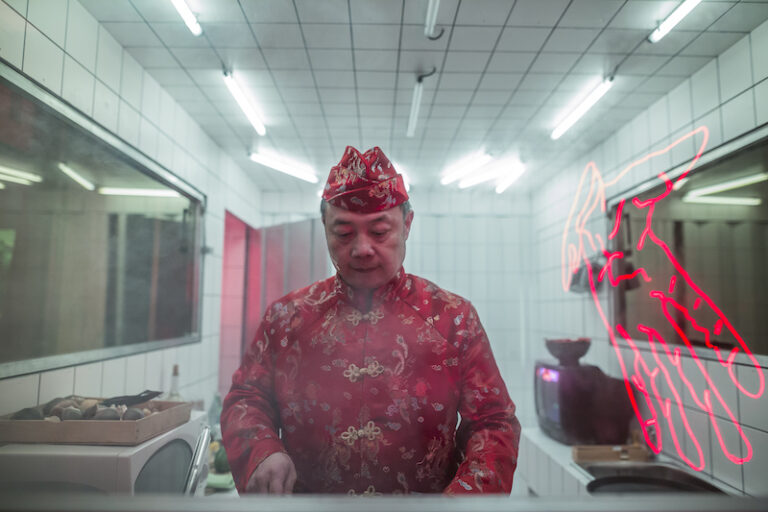Writer: Anka Herbut
Director: Łukasz Twarkowski
Is a painting less beautiful because it is a fake, and is it still art? Anka Herbut and Łukasz Twarkowski’s acclaimed multimedia performance ROHTKO arrives at the Barbican for a brief run, and it is hard to imagine this extraordinarily imaginative piece on the existence of tangible-intangible worlds within art could be staged anywhere else in London. West End theatregoers may be wearying of the camera-based techniques beloved of superstar directors including Ivo van Hove – whose work is very prescient here – and Jamie Lloyd, but with its blend of theatre, live streaming, video art, choreographed performance and layers upon layers of perspective, you’ve never seen anything like ROHTKO.
The piece is built around a single factual incident – that a fake Rothko painting was sold for $8.5 million and not discovered for 15 years, having been authenticated by numerous ‘experts’ in the art world. But this is not a linear story or a narrative but a structured reflection on the broader confluence of people, ideals, philosophies and shifts in the market that, Herbut and Twarkowski argue, has turned art into a commodity. Taking place across numerous time periods, it follows Rothko himself from the 1950s and leads up to the present day as fakes and the sale of replicated digital content replace physical paintings.
The scale of Herbut and Twarkowski’s vision is quite astonishing for a show which, in Act One, is largely set in Mr Chow’s restaurant in New York, where the giants of the art world and the art market did deals. Shown initially from the outside, what the audience sees becomes a contested experience, as cameras are used to enter the restaurant and paint stories across a giant screen. We view only what the director wants us to see; a fake version of a scene that the audience can note through the windows has huge amounts of incidental and contextual activity. When the room is opened up, time also lapses, cutting between different eras as the artist and those who want to capitalise on his work long after his death – including the actors playing him in this show – are seen side by side.
The deliberate misspelling of the title is part of these attempts to fool the eye into seeing and not seeing the fakery, and at times, the projected images no longer reflect the live action as pre-recorded sequences ensure the concept of ultimate truth remains hard to pin down. Herbut and Twarkowski keep track of the central thrust, however, the creation, sale and aftermath of the imitation Rothko, while guiding the audience through the complexities of Non-Fungible Tokens, blockchain and the relationships between physical and digital worlds, as well as questioning whether art fraud is a victimless crime for wealthy people who still end up with something beautiful on their walls. It’s not as beautiful as a real Rothko, the burned collector complains, and it’s not art – ROHTKO isn’t so sure.
Fabian Lédé’s multi-part set fills the Barbican stage with moveable boxes, screens and playing spaces that keep reality, unreality and the places in between in balance throughout. Eugenijus Sabaliauskas creates painterly visions within the lighting design inspired by reds and oranges of Rothko’s work, but there’s more than a little Edward Hopper in The Nighthawks’ noirish feel to the visuals that gives Mr Chow’s restaurant a timelessness that blends the decades together.
With a large cast who must perform as theatre and film actors simultaneously, this visionary show makes huge demands, yet the ensemble seems at ease with the roving cameras while the world of artists and art dealers, museum directors, performer-waitresses and journalists is immersively created, a big evolving business in which value and worth have warped beyond all recognition. Occasionally, the tension sags and the Chinese characters are ill-served by a script that leaves them entirely in the role of serving staff, but the near four-hour running time flies by and fascinated by the notion of “performing someone else’s performance,” ROHTKO believes that everything is art, but it is only artwork that you can sell.
Runs until 5 October 2025

